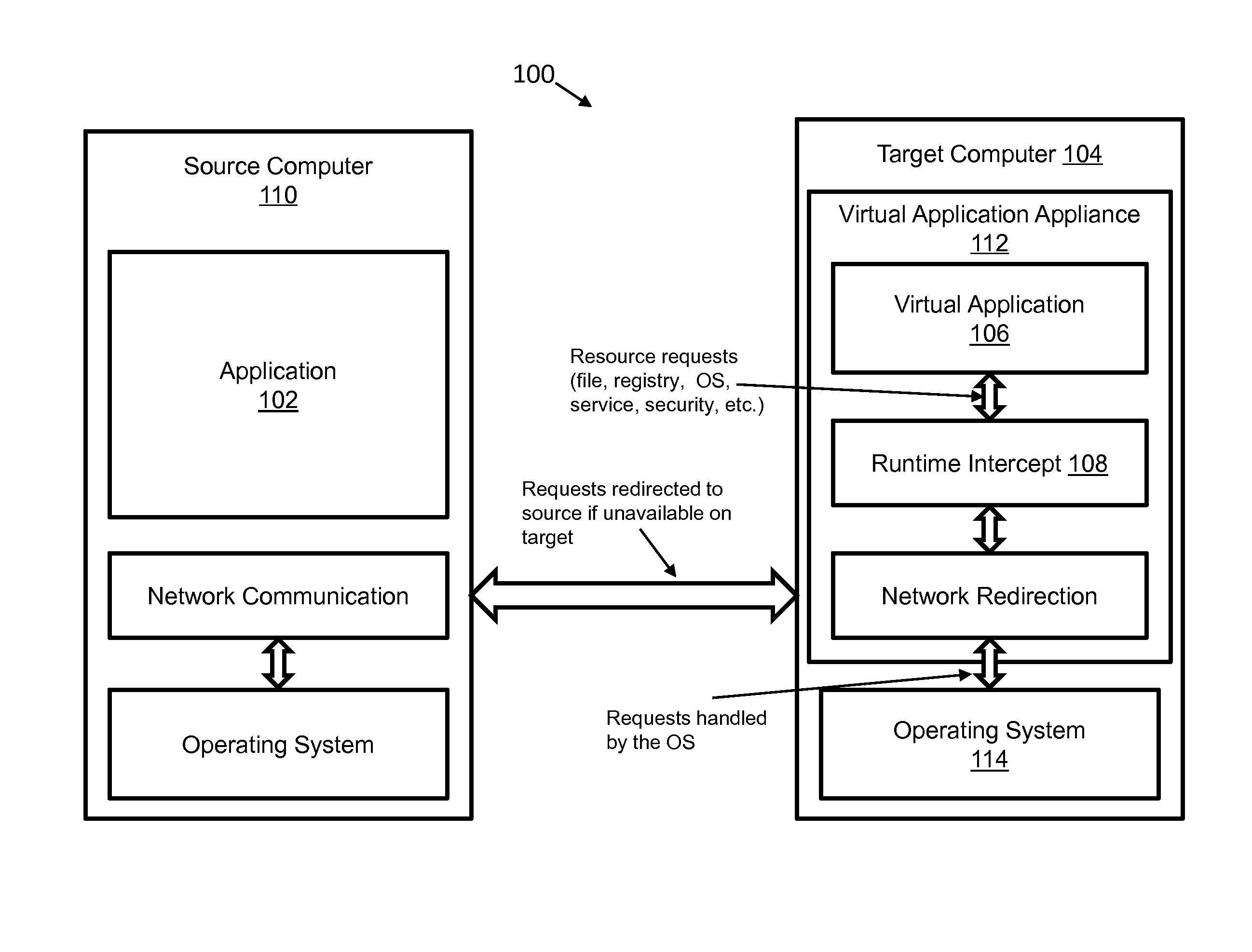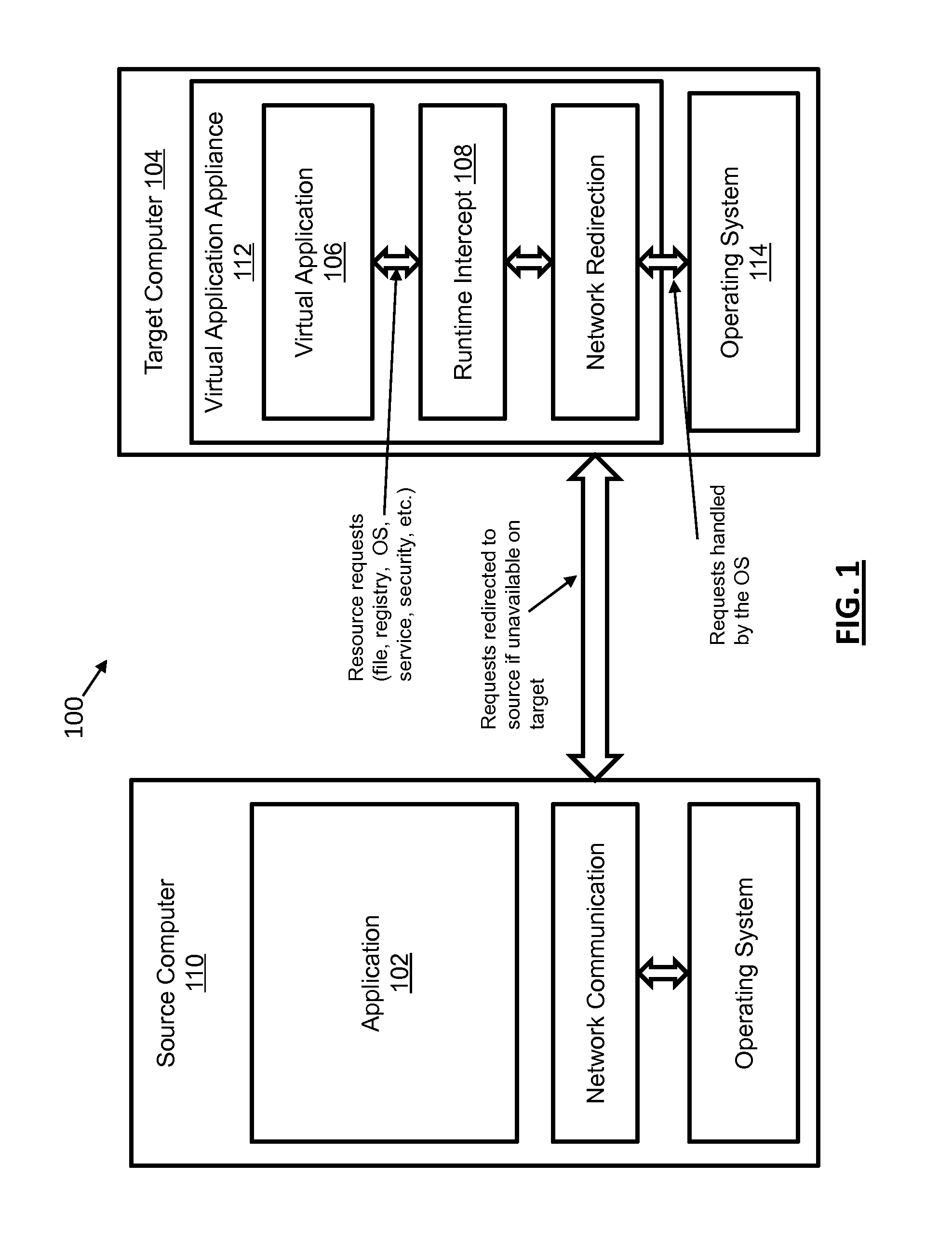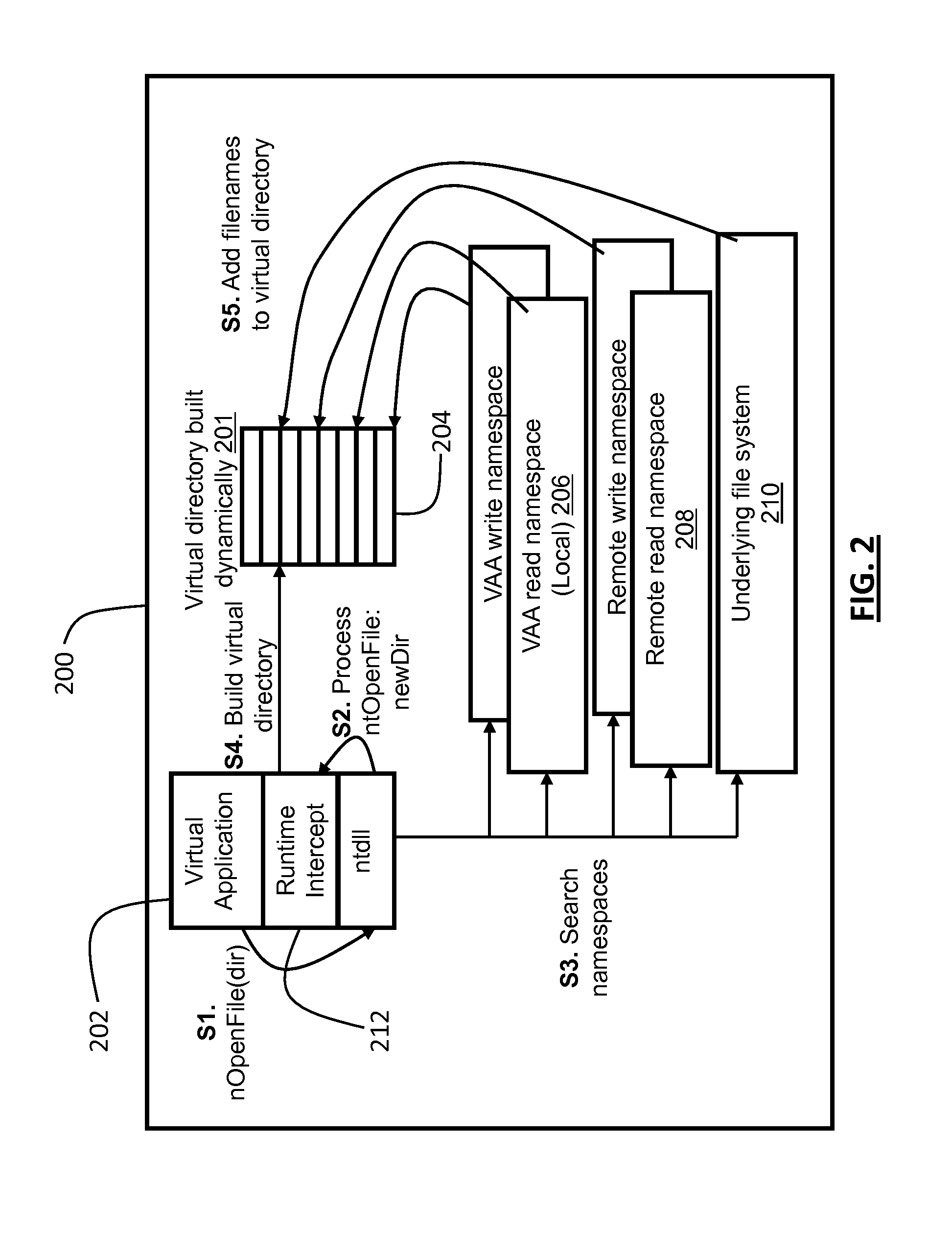On-demand tethered greedy virtual application appliance
- Summary
- Abstract
- Description
- Claims
- Application Information
AI Technical Summary
Benefits of technology
Problems solved by technology
Method used
Image
Examples
Embodiment Construction
[0026]While preferred embodiments may be illustrated or described, they are not intended to limit the invention. Rather, numerous changes including alternatives, modifications and equivalents may be made as would be understood by the person skilled in the art.
[0027]In the context of the present disclosure, a computer comprises one or more virtual or physical computing platforms including one or more non-transient computer readable memories having instructions and data resources and on one or more processors connected to the memories for executing the instructions. A source computer comprises a computer on which the application to be virtualized is installed, including data resources associated with that application. A target computer comprises a computer on which an embodiment of the present disclosure is installed to run a virtualized copy of the application installed on the source computer.
[0028]In the context of the present disclosure, data resources comprise the transient and pe...
PUM
 Login to View More
Login to View More Abstract
Description
Claims
Application Information
 Login to View More
Login to View More - R&D
- Intellectual Property
- Life Sciences
- Materials
- Tech Scout
- Unparalleled Data Quality
- Higher Quality Content
- 60% Fewer Hallucinations
Browse by: Latest US Patents, China's latest patents, Technical Efficacy Thesaurus, Application Domain, Technology Topic, Popular Technical Reports.
© 2025 PatSnap. All rights reserved.Legal|Privacy policy|Modern Slavery Act Transparency Statement|Sitemap|About US| Contact US: help@patsnap.com



